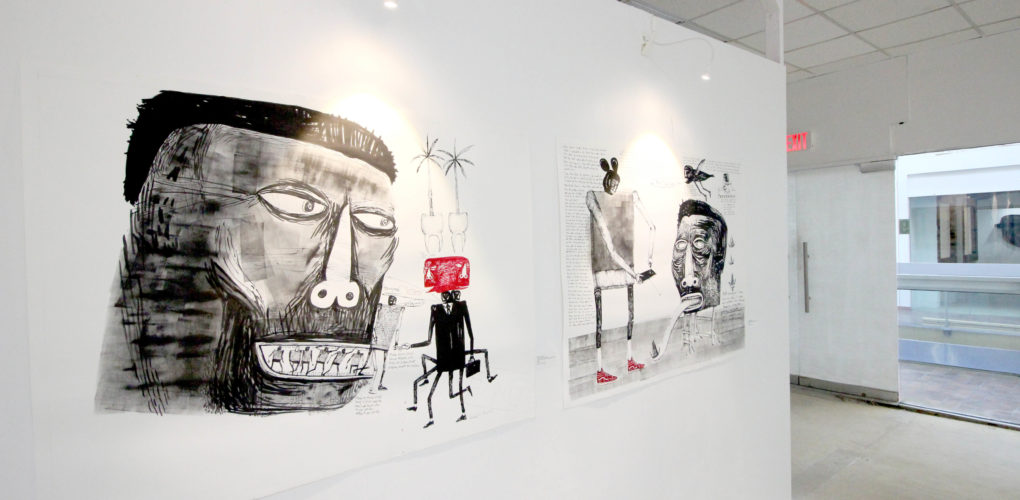One to Watch
 Navigating Diverse Realities and Perceptions of Self With Wendell McShine
Navigating Diverse Realities and Perceptions of Self With Wendell McShine
Wendell McShine seeks to connect the spiritual and real worlds in his paintings. His works have a whimsical touch, inspired in part by religious folklore. He also explores themes relating to the African and Caribbean Diasporas, the human condition, self-identity, and contemporary life. Wendell is a multidisciplinary artist, working with painting, sculpture, animation, and installation, and considers his works to belong not to one medium, but to a constitution of ways of recording and building a singular image.
Wendell lives and works in Miami, Florida. He has a background in information graphics and graphic communications. He was awarded the prestigious Reuters News Foundation Fellowship Award in the UK and has shown his works in solo and group shows in the US, China, Mexico, and countries throughout Europe.
What are the major themes you pursue in your work?
In my practice there’s always a space for questioning- I allow it to be without borders nor filters purposely, so that ideas can freely take residency. A particular recurring theme that shows itself within my work would be the proposition of a different reality in relation to one’s own perception of self-identity.
How did you first get interested in your medium, and what draws you to it specifically?
I work with many different mediums depending on the project’s nature. My favorite go-to is ink and paper. I work with animation as part of my work’s cosmology, and paper plays an interesting counterpart to what can happen with drawings over a period of time. I believe that my work doesn’t belong to a medium, but rather a constitution of ways of recording and building an image.
How has your style and practice changed over the years?
Over time my work has become less meticulous, and a great prominence of freedom and directness contributes to its vitality and presence. The power is in the search for me, the work evolves in ways that I can’t imagine at times. My approach is to keep things fun and loose in the studio, not only informing the process through research but also in listening to the work in order to find its place within a larger dialogue.
Can you walk us through your process? Do you begin with a sketch, or do you just jump in? How long do you spend on one work? How do you know when it is finished?
The process usually begins with some kind of sound element, which allows me an entry point. I tinker on the guitar or “Imaschine” (an app on my phone) that allows me to make sonic ideas quickly. When I experiment with sound, I feel balanced enough to then wander into sketching and documenting concepts and ideas.
I work on several pieces at the same time over a period of weeks which are at varying germination stages. By the end of a couple months I will have produced roughly six to fifteen works in different mediums. I’m not looking for a finished modality but rather another layer of research.
It’s like a game of hide and go seek; I find a thing, that thing has hidden qualities, it leads me into a type of search seeking its purpose. I feel a sense of happiness when a piece takes control of itself– that’s when its finished.
What are some of your favorite experiences as an artist?
One of my most exhilarating experiences occurred at the Kunsthal Kade Museum in the Netherlands, where I got the opportunity to create my work directly on the museum’s wall space on a grand scale. The work was titled “Batman & Bow Ties” and was part of a group show “Who’s More Sci-fi Than Us” curated by Nancy Hoffman. The installation incorporated objects, drawings, and animation measuring roughly 80 feet by 25 feet. It was an unforgettable moment.
If you could only have one piece of art in your life, what would it be?
I’m a big fan of Katsuhiro Otomo’s “Akira.” Without being modest I believe it’s the world’s most important work of science fiction. It’s a critique of a dystopian cyberpunk time and almost preachy warnings to our contemporary existence where the way man, spirit, and machine are working together may force an evolution upon us in ways that we may never come to understand. I would love to have the original hand painted cell of the opening scene (minute 3:25).


















